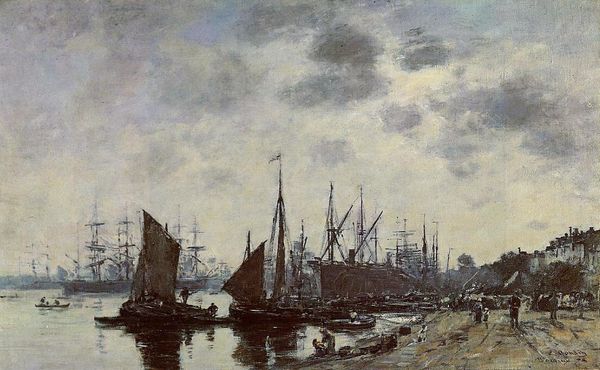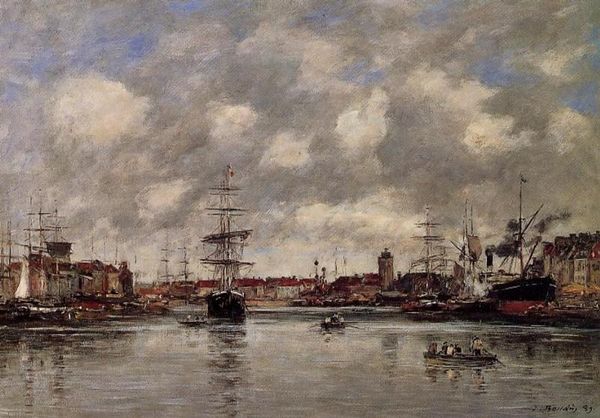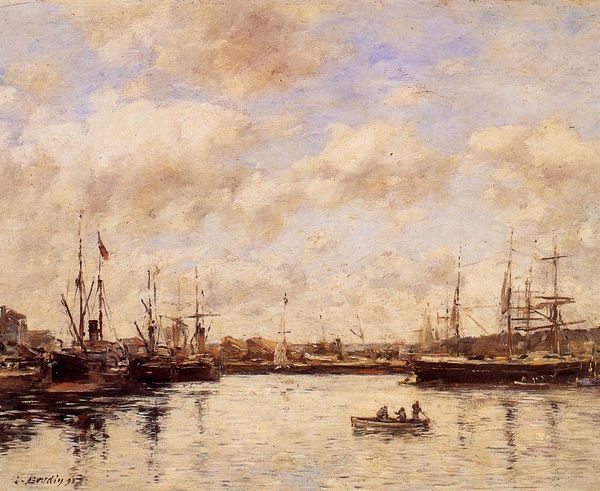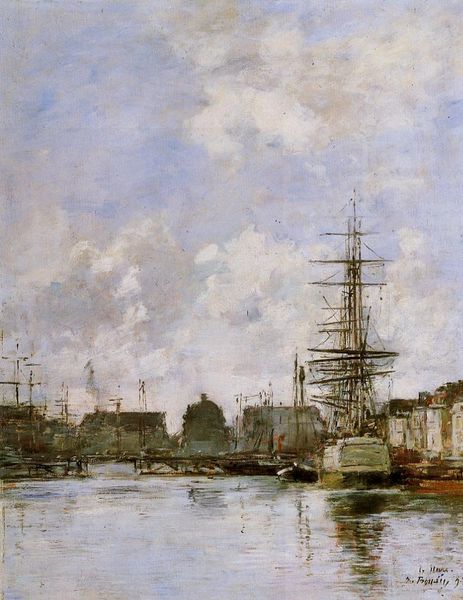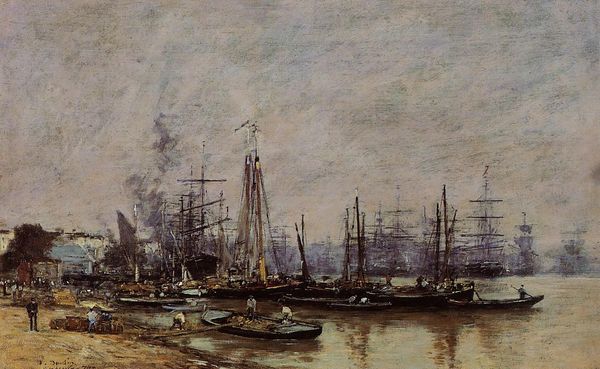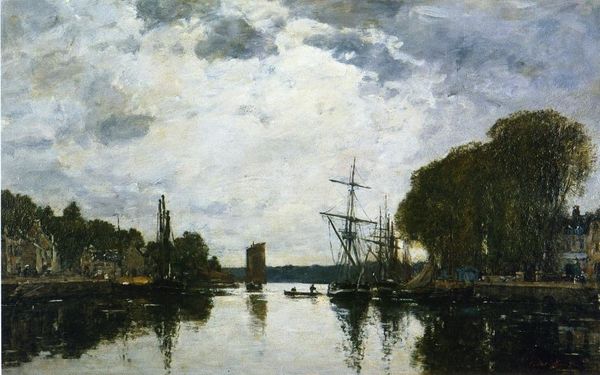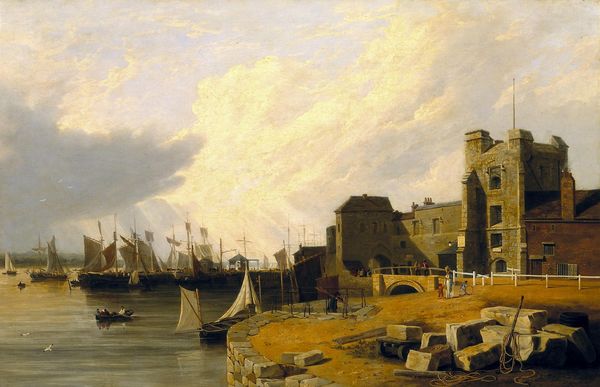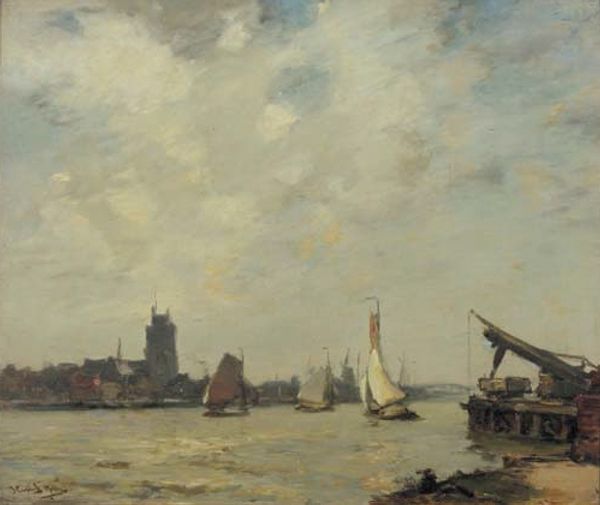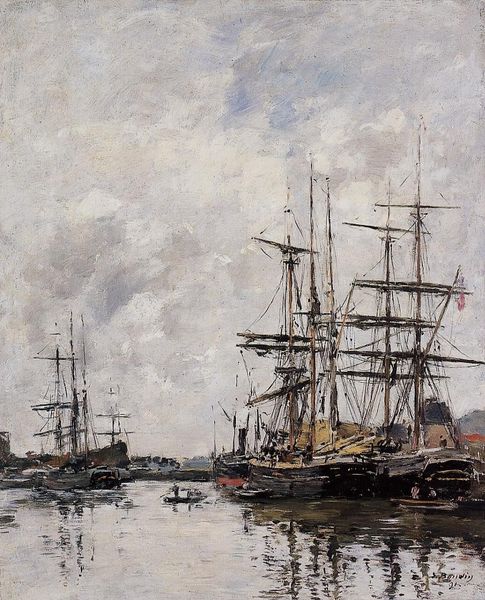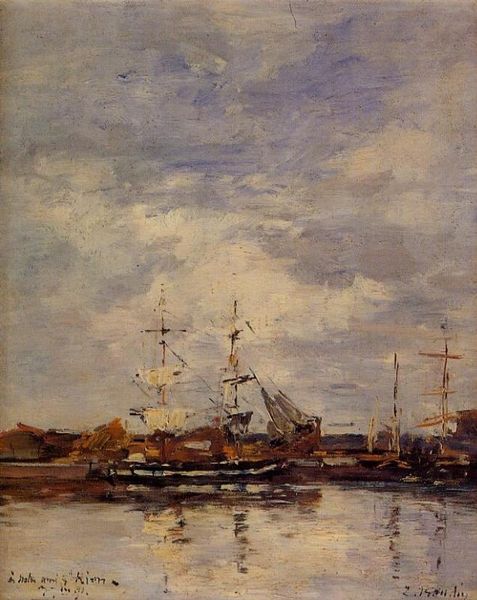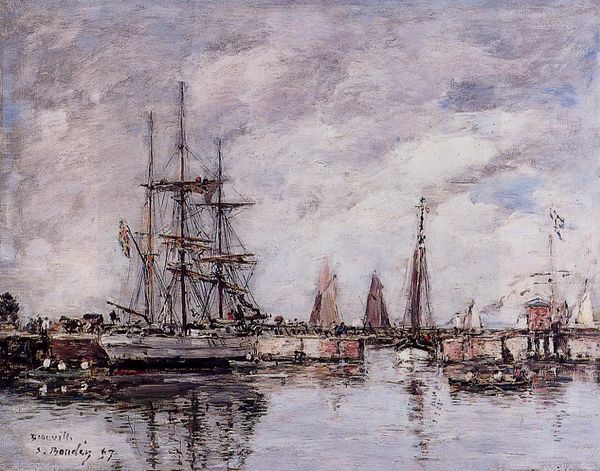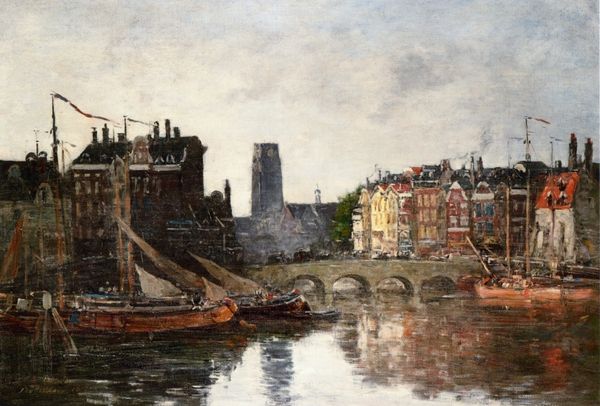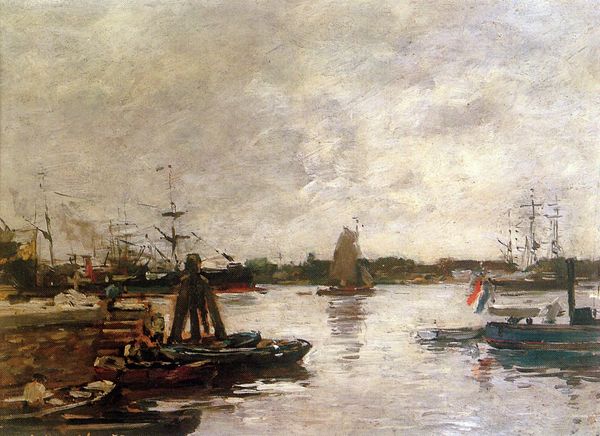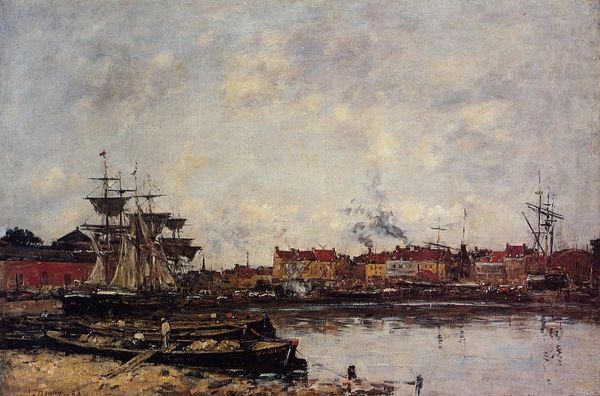
painting, oil-paint
#
portrait
#
boat
#
sky
#
art-nouveau
#
ship
#
painting
#
impressionism
#
oil-paint
#
landscape
#
oil painting
#
orientalism
#
france
#
water
#
line
#
cityscape
#
modernism
Copyright: Public domain
Editor: We’re looking at Eugène Boudin’s “A French Port,” painted in 1884 using oil on canvas. It feels like a bustling, but somewhat muted, scene. All the ships create a visual layering. What draws your eye in this composition? Curator: Immediately, it's the masterful handling of light and atmosphere. Notice how Boudin uses the overcast sky to create a diffused light, unifying the composition. The color palette, dominated by muted blues, grays, and browns, generates a tonal harmony, despite the complexity of the subject matter. Consider the vertical thrust of the ships' masts and the church tower; these lines punctuate the horizontal expanse of the water, creating a structured visual rhythm. How does Boudin handle perspective? Editor: Well, the atmospheric perspective, with the lighter tones of the sky, does suggest distance. I see what you mean by the tonal harmony – the muted colors prevent the detailed ships from becoming too chaotic. Curator: Precisely. The subtle gradations of color and tone delineate space, receding into the background. The application of paint, observe the short, broken brushstrokes characteristic of Impressionism. Boudin focuses on capturing the fleeting effects of light and atmosphere rather than meticulous detail. The boats and ships act as dark shapes that function as focal points within the canvas, juxtaposing texture and light. Editor: It's interesting how the lack of strong color actually emphasizes the structure of the port and the ships. It really comes down to lines, shapes, and brushstrokes in the end. I appreciate that I’m looking at the subject with a new understanding. Curator: Indeed. It prompts a renewed consideration for its formal strengths, wouldn't you agree?
Comments
No comments
Be the first to comment and join the conversation on the ultimate creative platform.
